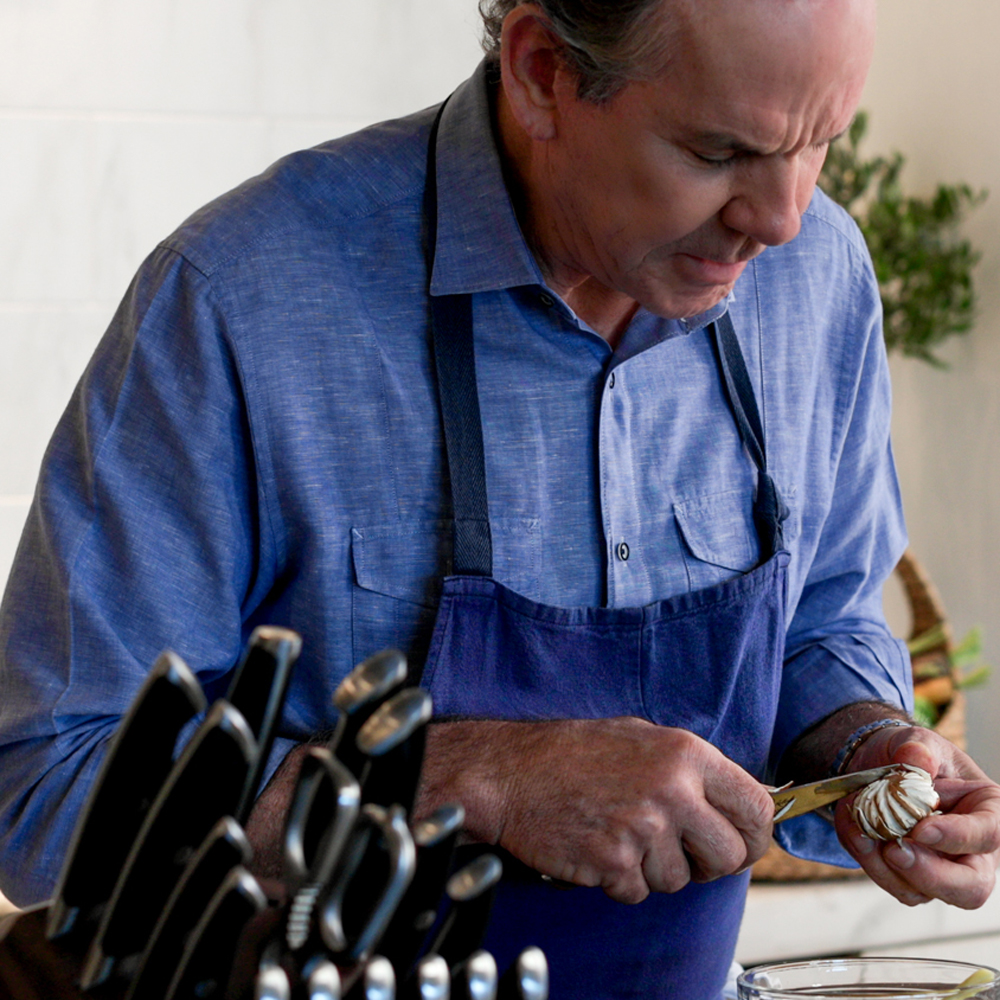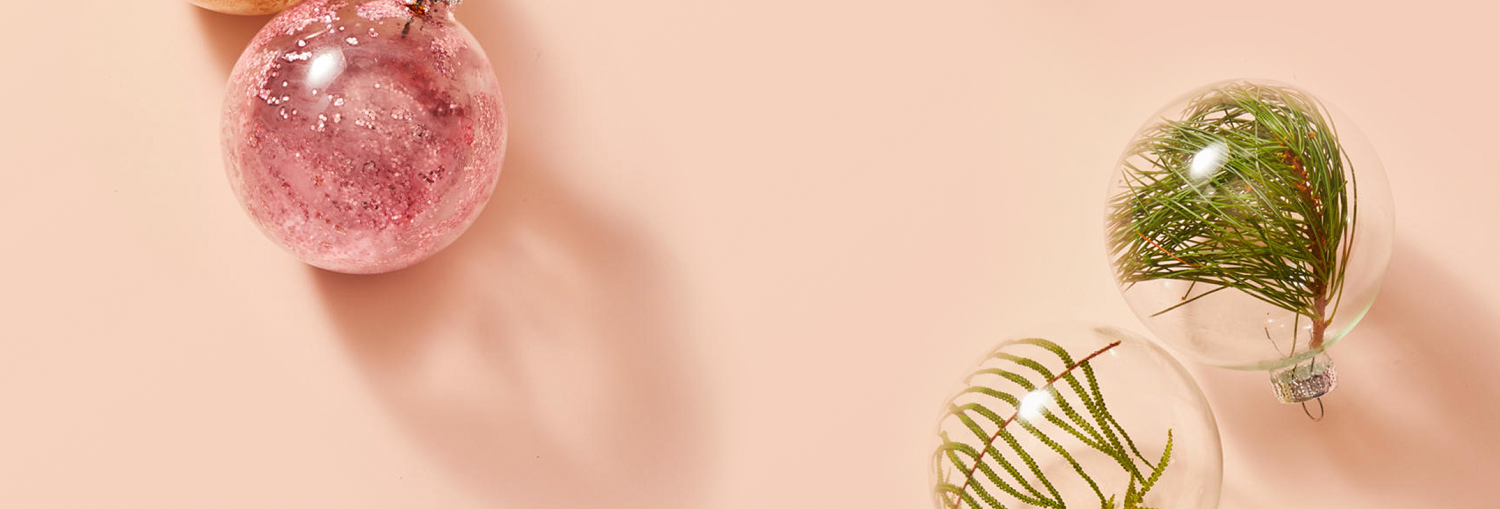Knife Skills with Chef Thomas Keller

If you’ve never seen Chef Thomas Keller chop up an onion, you are missing out. The award-winning chef and restauranteur cuts super thin slices so quickly, you’d swear your eyes were playing in fast forward. And his brunoise carrots? Well, if you didn’t watch him cut them, you’d assume they were cut in a factory … by a machine. So it makes sense that the French Laundry chef just designed his very own line of knives and, like his sharp knife skills, they are world class.
Chef Keller worked with the legendary knife masters at Cangshan for more than two years to perfect the design of each and every piece. In true Keller fashion, the chef paid attention to every design detail, such as how long the tines should be on his carving fork and the exact angle of the recessed bolster. Meanwhile, Cangshan pros sourced high-quality powdered Swedish Damasteel, which resulted in a blade with unparalleled hardness. It was quite a rideand the final products show: Each piece in the Thomas Keller Signature Collection cutlery line is incredibly strong, sharp, and balanced.
As part of the launch, Chef Keller wanted to show Williams Sonoma shoppers how to use these knives the right way, so he paid a visit to our test kitchen to film a handful of videos that really showcase the key knife skills. Watch him at work and then try practicing along.
How to Hone a Knife
First things first: “A honing steel does not sharpen the knife,” Keller points out. “It only reinforces the edge and keeps it sharp.” How often you need to do it will depend on the type of cook you are. Keller and his team could hone a knife up to 10 times in a single night, while you may only have to do it once a month. Start by honing your favorite chef’s knife now and getting a feel for when it starts to cut differently again. That’s when it’s time to hone it again.
You’ll need this Cangshan Thomas Keller 8-Inch Honing Steel Knife and you can use it one of three ways. “The first is the one they teach in culinary school,” Keller says. “And that’s to hold the steel perpendicular to your body and then draw the knife down across the steel at a 15-degree angle.” Alternatively, you can draw the knife away from your body instead of toward it. Or, you can establish a stationary point on a cutting board and draw your knife down the steel. This third method is the best for beginners, as it minimizes and danger and gives you a clear view of the angle you’re working at. ”
How to Brunoise a Carrot
Brun-what? “Brunoise is a dice of vegetables,” Keller explains. (Picture julienned strips that are then cut into small 1/8-inch cubes.) “We use brunoise for texture, for color, and for flavor. It’s a great way to give your sauces and food that little extra color that really creates excitement.” Keller suggests grabbing his Santoku knife for this. Then, cut your carrot to a length that feels manageable to you. Cut the piece so that it’s a block that you can then shave into 1/8-inch sheets. Julienne those sheets and then cut the strips into cubes. “Keep your fingers very close to the knife blade as you work,” he adds.
How to Break Down a Chicken
Fact: Buying a whole chicken is way more economical than buying the pieces separately. And as long as you have a flexible boning knife, you can easily break down a chicken on your own. Start by cutting between one thigh and the joint until the piece just falls away. “Create tension between the skin so that we can pull the meat as we work,” Keller says. Separate the leg from the thigh and then do the same to the other side. Next, it’s time for breast meat and that tension on the skin is key once again. “I try to create some tension on the skin, so that I get my breasts on both sides of the breast plate to be covered with skin.” Follow the carcass along with your boning knife and it does all the work for you. Finish by taking the wings off both sides.
How to Tourne a Potato
Tourne is french and translates to turning vegetables (potatoes, zucchini, carrots!) or maybe even a piece of fruit (like an apple!). In culinary school, learning this knife skill is a big deal because it demonstrates mastery and dexterity. It’s more than just a pretty way to cut things, too: It also helps naturally unevenly shaped foods such as potatoes cook more evenly. Some people complain that this knife cut creates a lot of unnecessary food waste, but Keller likes to take the scraps and fry them up for breakfast to serve with eggs.
To get started: “I’m going to begin using my utility knife and create what we like to call blanks.” Once your blank is ready, hold it in your hand and know that a turned vegetable has seven sides. “Place your thumb on one end pull and your knife through the vegetable,” he says. Keep going until you have seven sides. Pretty, right?
How to Carve a Roast Chicken
A simple roast chicken is one of Keller's favorite and most famous recipes. But it's all in the carvingand he has three secrets that’ll help you get up to his level. First: Sprinkle your cutting board with salt and pepper. “This way, when we’re putting our roasted pieces down, we’re actually seasoning the parts that couldn’t get seasoned for the roasting process,” he says. Secondly, he pulls out the wishbone to make it easy to slice the breast off all in one neat piece. Also, you’ll need his carving set, which he painstakingly designed. “The tines are not too longother sets are longer by an inch or an inch and half and they just seem too clumsy. This is very elegant but also very practical in size.” Now you’re all set to start carving along the thighs and then the breasts.
How to Tourne a Mushroom
While you’d tourne other vegetables for aesthetics and to help them cook more evenly, you’d do a mushroom strictly for looks. It makes a beautiful mushroom cap that almost looks like a flower! All you do is use your utility knife to make thin cuts beginning at the top of the mushroom and slicing all the way to the bottomand you do this all the way around to create these beautiful channels. Funnily enough, Keller tournes his mushrooms using his left hand because he learned the technique from a left-handed chef.

